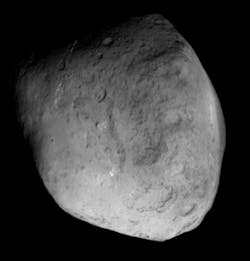NASA spacecraft performs flyby of Comet Tempel 1
Posted by John McHaleDENVER, 17 Feb. 2011. NASA's Stardust-NExT spacecraft made a deep-space rendezvous with an object it had been seeking for the past four and a half years -- comet Tempel 1. Stardust made its closest approach of the nucleus of the comet at a distance of 111 miles and was traveling a relative speed of 24,300 miles per hour. During the encounter, the NavCam instrument took 72 images of the comet. In addition, two other instruments aboard the spacecraft collected data on the composition, size distribution, and flux of dust emitted into the coma—the cloud of dust and debris surrounding the comet. The closest images can be viewed at http://www.jpl.nasa.gov/news/stardust. During the encounter, and for the previous 12 years, Lockheed Martin provided mission flight operations for the spacecraft. At its Mission Support Area (MSA) near Denver, engineers monitor the health and safety of the spacecraft, develop, test, and send commands via the Deep Space Network, and plan mission activities. Spacecraft navigation and project management are handled by the Jet Propulsion Laboratory in Pasadena, Calif.For information on NASA's 2012 budget request, read "NASA budget remains flat, supporting commercial spaceflight as shuttle propgram winds down.""This little spacecraft has really been around the block. Even through the odometer is high and the fuel is low, it did everything we asked of it and the results are visually amazing," says Allan Cheuvront, Lockheed Martin Space Systems Company program manager for Stardust-NExT. "Most of our team has been working with the spacecraft since launch and their dedication to this project was clearly evident today.""The NExT mission is a shining example of an innovative and affordable solution that is bringing us outstanding science," says Jim Crocker, vice president of Sensing and Exploration Systems at Lockheed Martin Space Systems Company. "The team was able to fly Stardust through deep space and send back amazing images and science data, all at a small fraction of the cost of a new, ground-up mission."The next phase has the NavCam taking an image of Tempel every five minutes for five days and then every 12 minutes for the following six days as the comet recedes into the distance. Several weeks after the flyby, the Stardust spacecraft will be decommissioned.Stardust-NExT is a low-cost mission that will expand the investigation of comet Tempel 1 initiated by NASA's Deep Impact spacecraft. JPL, a division of the California Institute of Technology in Pasadena, manages Stardust-NExT for the NASA Science Mission Directorate, Washington, D.C. Joe Veverka of Cornell University, Ithaca, N.Y., is the mission's principal investigator.More information about Stardust can be found at http://stardustnext.jpl.nasa.gov/index.html or http://www.lockheedmartin.com/products/StardustNExT.
